(Upload on January 11 2023) [ 日本語 | English ]
Mount Usu / Sarobetsu post-mined peatland
From left: Crater basin in 1986 and 2006. Cottongrass / Daylily
HOME > Lecture catalog / Research summary > Glossary > Zoology > Mammal
Taxonomical syllabus (分類体系)Taxonomical syllabus (上位分類群)Grazing Feeding habit
Rodents, Yak Phylum Protochordata (原索動物)Class Urochordata (尾索類) = Tunicata (海鞘綱) tunicatesOrder Ascidiacea (ホヤ), sea-squirts, ascidiansSuborder Enterogona (腸性ホヤ) Ciona (ユウレイボヤ) Suborder Pleurogona (側性ホヤ) Botrylloides (イタボヤ), colony, Styela (シロボヤ/エボヤ), Halocynthia (マボヤ/カボヤ) [Octanemida – Ascidacea or Thaliacea - phylogenetic relations, not determined] Order Thaliacea (サルパ) Suborder Pyrosomata (ヒカビボヤ) Suborder Doliolida (ウミタル) Doliolum (ウミタル) Suborder Salpida (サルパ) Salpa (サルパ) Order Appendicularia (尾虫) = Larvacea, Copelata |
Class Cephalochordata (頭索類)= Leptocardia, lanceoletsBranchiostoma (= Amphioxus)ナメクジウオ Phylum Vertebrata (脊椎動物)vertebrates (chordates)Superclass Tetrapoda (四足動物)= quadraped (四足動物)Class Mammalia Linnaeus, 1758 哺乳綱= placenta (胎盤) → umbilical cord (へその緒)
(McKenna & Bell 1997) 自分が分かりやすいの Footprint (足跡)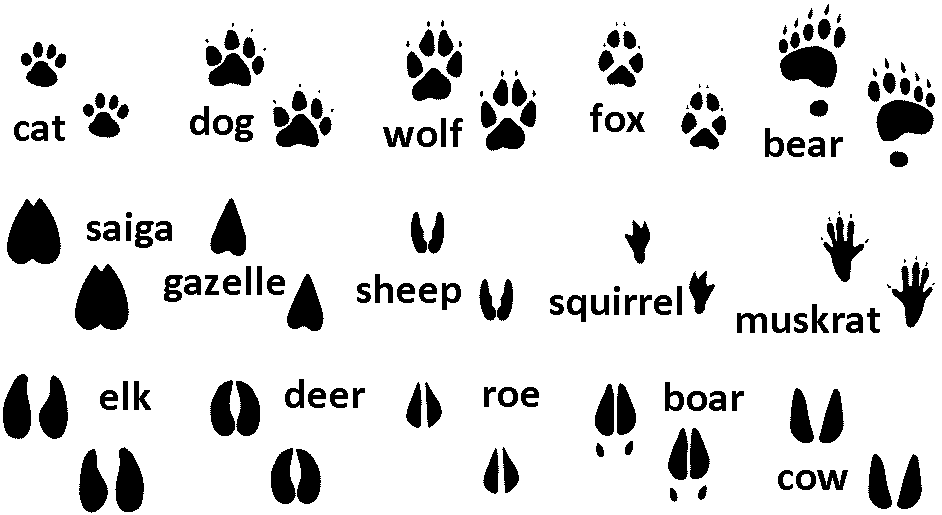 Four-legged locomotion (四足歩行) (walk ≠ run) Digitigrade (趾行) Unguligrade (蹄行): v = s/t v = velocity, s = step length, t = step cycle Plantigrade (蹠行) |
Subclass Prototheria 原哺乳類亜綱 (単孔類)
Order Platypoda カモノハシ(類), platypus Subclass Theriformes 獣型亜綱 (単孔亜綱)Infraclass Allotheria 異型下綱 (*)Order Multituberculata 多丘歯 (*)
Suborder Cimolodonta キモロドン (*) Infraclass Triconodonta 三錘歯下綱 (*)Infraclass Holotheria 完獣下綱
Superlegion Kuehneotheria キューネオテリウム上団 (*) Legion Symmetrodonta 相称歯団 (*)
Order Amphidontoidea アンフィドン (*) Legion Cladotheria 岐獣団 Sublegion Dryolestoidea ドリオレステス亜団 (*)
Order Dryolestida ドリオレステス (*) Sublegion Zatheria 最獣亜団
Infralegion Peramura ペラムス下団 (*)
Supercohort Aegialodontia アエギアロドン上区 (*)
Order Deltatheroida デルタテリディウム (*)
Cohort Marsupialia (Metatheria) 有袋区(後獣区), 有袋類, marsupial Suborder Archimetatheria 古後獣 Magnorder Australidelphia 豪州袋巨目
Superorder Microbiotheria ミクロビオテリウム上目
Order Yalkaparidontita ヤルカパリドン目 (*)
Grandorder Dasyuromorphia フクロネコ大目
Order Peramelia バンティクート, バンティクート類
Phascolarctidae: koalas (eastern Australia) Magnorder Ameridelphia 米州袋巨目
Order Didelphimorphia オッポサム形, オッポサム類 Cohort Placentalia (Eutheria) 有胎盤区 (真獣区), 有胎盤類 Order Bibymalagagsia マダガスカル獣目 Magnorder Xenarthra 異節巨目, 貧歯類
Order Cingulata 被甲目, アルマジロ
Suborder Vermilingua 虫舌亜目
Infraorder Mylodonta ミロドン下目 (*) Magnorder Epitheria 上獣巨目
Superorder Leptictida レプティクティス上目 (*) Grandorder Anagalida アナガレ大目
Mirorder Macroscelidea ハネジネズミ中目, ハネジネズミ類
Order Mimotonida ミモトナ目 Mirorder Simplicidentata 単歯中目
Order Mixodontia 混歯目 Suborder Sciuromorpha リス形
Infraorder Theridomyomorpha テリドミス形下目 Suborder Myomorpha ネズミ(形)亜目
Infraorder Myodonta 鼠歯下目
Suborder Anomaluromorpha ウロコオリス亜目 Infraorder Hystricognathi ヤマアラシ顎下目
Parvorder Bathyergomorphi デバネズミ小目 Grandorder Ferae 広獣大目 Order Cimolesta キモレステス目 
Suborder Didelphodonta ディデルフォドゥス (*) |
Order Credonta 肉歯目
Suborder Feliformia ネコ型
Infraorder Cynoidea イヌ下目
Parvorder Ursida クマ小目 Grandorder Lipothyphla 無盲腸大目 (Insectivora 食虫大目, -類)
Order Chrysochloridea キンモグラ目 Grandorder Archonta 主獣大目 Order Chiroptera 翼手目
Suborder Megachiroptera 大翼手目
Infraorder Yinochiroptera 陰翼手下目 Order Primates 霊長目 (霊長類)
Suborder Dermoptera 皮翼亜目
Infraorder Strepsirrhini 曲鼻下目
Parvorder Transiformes メガネザル型小目 Order Scandentia 登木目 Grandorder Ungulata 有蹄大目 (有蹄類)
Order Tubulidentata 管歯目 Mirorder Eparctocyona 上アルクトキオン中目
Order Procreodi 前肉歯目 (*) 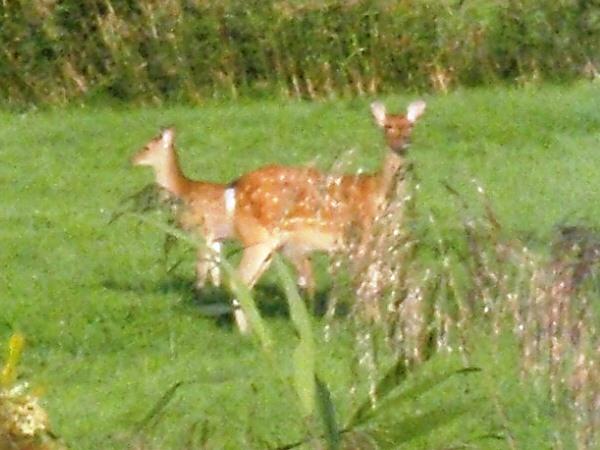

Suborder Acreodi 無肉歯亜目 (*)
Infraorder Archaeoceti 古鯨下目 (*)
Parvorder Mysticeti ヒゲクジラ小目 Order Artiodactyla 偶蹄目
Suborder Suiformes 猪型亜目 Mirorder Meridiungulata 牛蹄中目 (*)
Order Litopterna 滑距目 (*)
Suborder Notioprogonia 南祖亜目 (*)
Order Astrapotheria 雷獣目 (*) Mirorder Altungulata 高蹄中目 Order Perrisodactyla 奇蹄目
Suborder Hippomorpha ウマ形亜目
Infraorder Selenida 月獣下目 Order Uranotheria 天獣目
Suborder Hyracoidea イワダヌキ亜目
Infraorder Sirenia カイギュウ下目
Parvorder Desmostylia 束柱小目 (*) |
|
Characterized by endless-growing incisors Taxonomical hierarchy: Animalia > Chordata > Mammalia > Eutheria > Euarchontoglires > Rodentia Rodentia (Bowdich 1821)Sciuromorpha リスAplodontiidae (mountain beaver) ヤマビーバーSS Gliridae, also Myoxidae and Muscardinidae (dormice) ヤマネ Sciuridae (squirrels, including chipmunks, prairie dogs, and marmots) リス
Castorimorpha ビーバーCastoridae (beavers): Castor (C. canadensis アメリカビーバー, C. fiber ヨーロッパビーバー)Geomyidae (ホリネズミ) pocket or true gophers Dikkomys! early Miocene, North America, Thomomys セイブホリネズミ western pocket gophers (9 species, T. talpoides, MSH), Geomysトウブホリネズミ eastern pocket gophers (5), Orthogeomys タルトゥーサホリネズミ taltuzas (10), Zygogeomys ミチョアカンホリネズミ tuza (1), Pappogeomys アルコーンホリネズミ alcorn's and buller's pocket gophers (9), Cratogeomys キガオホリネズミ yellow-faced and mexican pocket gophers Zapodidae, jumping mice Heteromyidae (ポケットネズミ) kangaroo rats and kangaroo mice Gliridae ヤマネ: Glirulus japonicus (Schinz) ヤマネ* Myomorpha ネズミ= Superfamily Myomorpha (ネズミ): about 1,000 sppmouse ≈ Mus, in particular, Mus musculus (or including Peromyscus) rounded ears, large relative to the head, a long, skinny, hairy tail, a pointed or triangular snout rat ≈ Rattus, in particular, Rattus rattus and R. norvegicusshorter and thicker tails that are hairless and scaly than mouse vole (meadow mouse): Microtus montebelli and othersstouter bodies, shorter tails, and a rounder face with smaller ears than mouse Dipodidae (トビネズミ) jerboas and jumping miceCalomyscidae (mouse-like hamsters) Cricetidae (hamsters, New World rats and mice, voles) キヌゲネズミ Muridae (ネズミ) true mice and rats, gerbils, spiny mice, crested rat: 1326 species in 281 genera Subfam Arvicolinae (ハタネズミ, 26/143) Myopus schisticolor (モリネズミ wood lemming), Aschizomys ヤチネズミ (A. niigatae ニイガタヤチネズミ*, A. anderson トウホクヤチネズミ*, A. imaizumii ワカヤマヤチネズミ*), Eotheromys カゲネズミ (E. kageus カゲネズミ*, E. smithi スミスカゲネズミ*), Diplothrix legata ケナガネズミ, Clethrionomys ヤチネズミ (C. rufocanus bedfordiae エゾヤチネズミ → the type C. rufocanus タイリクヤチネズミ), Lagurus Gloger 1841 (L. lagurus ソウゲンタビネズミ, steppe lemming), Microtus ハタネズミ (M. grestis キタハタハタネズミ field vole = Atlantic-Lake Baikal, M. montebelli ハタネズミ, M. montanus montane vole = MSH), Ondatra マスクラット muskrat (O. zibethica マスクラット), Phenacomys heather vole, Dicrostonyx クビワレミング (D. groenlandicus, Collared Lemming - alpine tundra, NE Dawson), Synaptomys ヌマレミング (S. borealis (Richardson), northern bog lemming: boreal bog (Alaska-Canada, rare) Lemmus Link 1795 (レミング, (true) lemming)
L. amurensis (Amur lemming) |
Calomyscinae (カンガルーハムスター): 1/6 Subfam Cricetinae (or Fam Cricetidae) (キヌゲネズミ, 7/18) Cricetulus (C. griseus チャイニーズハムスター/モンゴルキヌゲネズミ, C. migratorius アルメニアンハムスター /タビキヌゲネズミ), Phodopus (Phodopus sungorus ジャンガリアンハムスター/ヒメキヌゲネズミ, P. sungorus ロシアンハムスター, P. roborovski ロボロフスキーハムスター), Mesocricetus (M. auratus シリアンハムスター/ゴールデンハムスター, M. brandti ブラントハムスター), Tscherskia triton トリトンハムスター/キヌゲネズミ Cricetomyinae (アフリカオニネズミ): 3/6 Dendromurinae (キノボリマウス): 8/23 Subfam Gerbillinae (アレチネズミ), established Gerbillidae: 14/110 Ammodillus: A. imbellis (ソマリスナネズミ), Brachiones: B. przewalski (ヒメスナネズミ), Desmodilliscus: D. braueri (ホオブクロアレチネズミ), Desmodillus: D. auricularis (コミミアレチネズミ), Dipodillus (チビオアレチネズミ), Gerbilliscus, Gerbillurus (コビトアレチネズミ), Gerbillus (アレチネズミ), Meriones (スナネズミ), Microdillus: M. peeli (チビアレチネズミ), Pachyuromys: P. duprasi (オブトアレチネズミ), Psammomys (デブスナネズミ), Rhombomys: R. opimus (オオスナネズミ), Sekeetamys: S. calurus (フサオスナネズミ), Tatera: T. indica (インドオオアレチネズミ), Taterillus (ハダシアレチネズミ) Lophiomyinae (タテガミネズミ): 1/1 Subfam Murinae (ネズミ) mouse, rat, 122/529 Cricetus, hamster Mesocricetus, golden hamster Rattus Fischer de Waldheim 1803 (クマネズミ), rats: R. norvegicus Berkenhout 1769 (ドブネズミ/シロネズミ/ダイコクネズミ), albus = farmed breed, albino type, 2n = 42 Mus Clerck 1757 (ハツカネズミ), M. musculus (ハツカネズミ, 二十日鼠), house mouse, M. caroli オキナワハツカネズミ, M. platythrix ヒラゲハツカネズミ Apodemus Kaup 1829 (A. speciosus アカネズミ*, A. argenteus ヒメネズミ*), Micromys (M. minutus カヤネズミ, M. montebelli ヤチネズミ*, A.s sylvaticus ヨーロッパモリネズミ, A. agrarius セスジネズミ), Millaradia ミラルディア, Tokudaia トゲネズミ 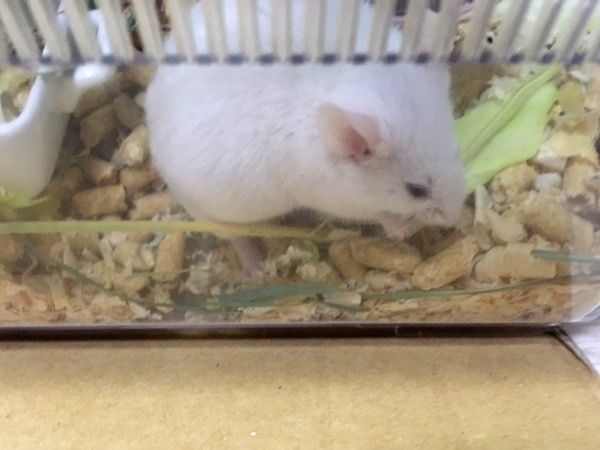 Myospalacinae (モグラネズミ): 1/7
Myospalacinae (モグラネズミ): 1/7Mystromyinae (オジロハムスターモドキ): 1/1 Nesomyinae (アシナガマウス): 7/14 Otomyinae (カローネズミ): 2/14 Petromyscinae (イワマウス): 2/5 Platacanthomyinae (トゲヤマネ): 2/3 Rhizomyinae (タケネズミ): 3/13 Spalacinae (メクラネズミ): 2/8 Subfam Sigmodontinae (Hesperomyinae)アメリカネズミ (79/423) Peromyscus (P. maniculatus シカシロアシネズミ deer mouse, widespread in the North America, vector and carrier of hantaviruses. P. leucopus シロアシマウス), Sigmodon, cotton rat. Neotoma, wood rat, pack rat and trade rat ウッドラット. Calomys カロミス/ヨルマウス Subfam Zapodinae (トビハツカネズミ): Zapus (トビハツカネズミ), north America - Asia, 3 species (Z. trinotatus, Mount St. Helens) Nesomyidae (climbing mice, rock mice, white-tailed rat, Malagasy rats and mice) Platacanthomyidae (spiny dormice) Spalacidae (mole rats, bamboo rats, and zokors) Anomaluromorpha ウロコオリスAnomaluridae (scaly-tailed squirrels)Pedetidae (springhares) HystricognathiヤマアラシHystricomorpha ヤマアラシ, porcupineDiatomyidae, incertae sedis (Laotian rock rat)Ctenodactylidae (gundis) Bathyergidae (African mole rats) Hystricidae (Old World porcupines) Petromuridae (dassie rat) Thryonomyidae (cane rats) Heptaxodontidae (giant hutias) Abrocomidae (chinchilla rats) Capromyidae (hutias) Caviidae (テンジクネズミ cavies, including guinea pigs and the capybara) Chinchillidae (chinchillas and viscachas) Ctenomyidae (tuco-tucos) Dasyproctidae (agoutis) Dinomyidae (pacaranas) Echimyidae (spiny rats) Erethizontidae (New World porcupines) Myocastoridae (nutria) Octodontidae (octodonts) |
EcologyMount UsuRodent densities were estimated on Mount Usu, northern Japan, 17 years after the 1977-1978 volcanic eruptions. The summit area was completely deforested by the eruptions, and was covered with thick tephra. When the survey was performed, two plant communities developed. One was a forest dominated by Populus maximowiczii, and another was a grassland with a canopy of the large perennial, Polygonum sachalinense. In each plant community, we estimated the abundance of rodents by Sherman traps. The abundance was 5 Clethrionomys rufocanus bedfordiae/100 traps/night in the grassland, and 0 in the forest. This implied that a generalist, C. rufocanus bedfordiae became established in the grassland, probably because of plant community structure, including litter deposits, rather than food resources. The results compared with those from Mount St. Helens suggested that rodent immigration was greatly determined by the scales of eruptions and recovery patterns of plant communities. (Iire & Tsuyuzaki 2007) |
Toolik lake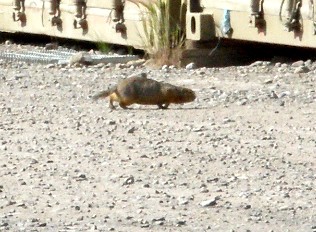
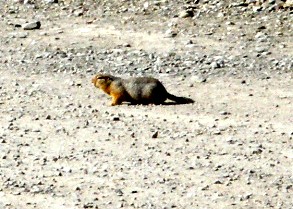
At Toolik Lake Research Station on August 8 2009. Three marmot species are in Alaska: hoary marmot (Marmota caligata), Alaska marmot (M. broweri), and woodchuck (M. monax). House rat (イエネズミ)The following three taxa (in general):Rattus rattus L. (クマネズミ)
BC1100-BC1000 immigrated to Europe from Mideast 1727 immigrated into Europe corossing the Volga River decline of R. rattus Mus musculus Temminck et Schlegel (アジアハツカネズミ)originally distributed in Europe and other regions |
|
Sheep (ヒツジ)Dall Sheep (Ovis dalli dalli)Dall Sheep inhabit the mountain ranges of Alaska. They are found in relatively dry country and frequent a special combination of open alpine ridges, meadows, and steep slopes with extremely rugged "escape terrain" in the immediate vicinity. They use the ridges, meadows, and steep slopes for feeding and resting. When danger approaches they flee to the rocks and crags to elude pursuers. They are generally high country animals but sometimes occur in rocky gorges below timberline in Alaska.
Ted Stevens Anchorage International Airport Domestic sheep (Ovis aries)Yak (ヤク)(pl. yak): a large long-haired ox primarily in Central Asian highlands
Etymology: Tibetan gyagk Nak: a female yak
Dzo (♂)/Dzomo (♀): a hybrid of a yak and a domestic cattle In Ruoergai marsh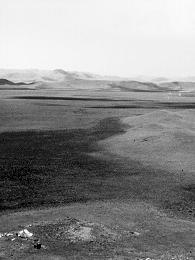 Landscape where vegetation zonation was surveyed in Ruoergai grassy marshland (wetland, 湿原). I used black/white films, becauase b/w photos were usual for publishing scientific papers.
Landscape where vegetation zonation was surveyed in Ruoergai grassy marshland (wetland, 湿原). I used black/white films, becauase b/w photos were usual for publishing scientific papers.2. Landscape on yak-grazing area. You can see yurts, i.e., Tibetan tents, scattered over a large area. Brown areas are becoming (semi-)bareground. 3. Close to yak-grazing area, we understand denudation well. The organisms laying down in the center of photo are yak, one of the cow species. So dangerous! 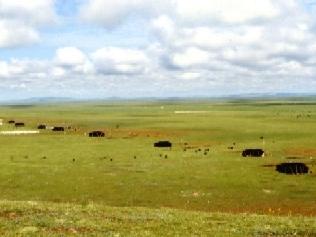 2 2
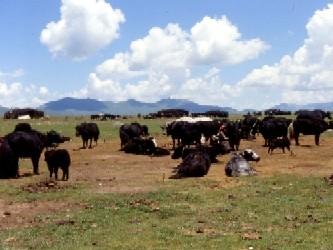 3 3
|
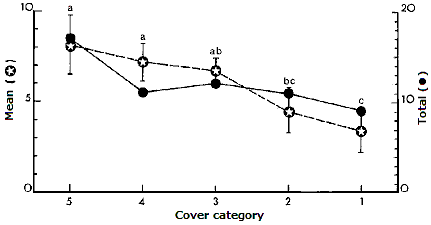
Fig. 1. Total or mean number of species in relation to coverage degree. Total number of species is shown by solid line, and mean number of species per quadrat is shown by interrupted lines with standard deviation drawn from vertical bar. Same letters shown above stars within circles indicate non-significant difference (t-test, p < 0.05). The difference of total number of species on cover categories is not significant (χ² test, p < 0.05) (Tsuyuzaki & Tsujii 1990). Cow digestive system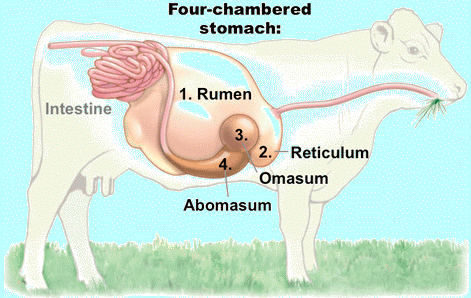 Rumination (反芻) Rumen (第一胃, 瘤胃): 10-20% of weight, developing culture system (heterotrophs and autotrophs, mostly anaerobic) Various bacterial and fungal breakdown different food sources, e.g.. high carbohydrate feed increases the number of Lactobascilli Reticulum (第二胃, 蜂巣): keratinized stratified squamous epitheliumhoneycomb tripe, particle sorting Omasum (第三胃, 重弁胃): regulating entry of food into the abomasumAbomasum (第四胃, 皺胃): true stomach Deer (シカ)Cervidae Goldfuss 1820 (シカ)Cervus L. 1758 (シカ) C. albirostris (クチジロジカ), C. canadensis (アメリカアカシカ, elk), C. nippon (ニホンジカ, northern spotted deer or Japanese deer), C. elaphus L. 1758 (アカシカ, red deer) |
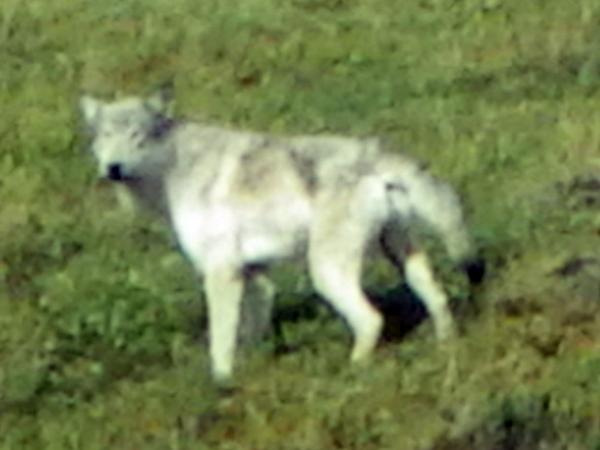
Canidae (dog, イヌ)Wolf (Canis lupus)The wolf occurs throughout Alaska. Their range includes about 85% of Alaska's 586,000 mi². Wolves are adaptable and exist in a wide variety of habitats extending from the rain forests of the Southeast Panhandle to the arctic tundra along the Beaufort Sea. Although the distribution of wolves has remained relatively constant in recent times, their abundance has varied considerably as prey availability, diseases, and harvests have influenced their numbers.Ted Stevens Anchorage International Airport, Natural History Collection Felidae (true cats, ネコ)
Miacis ─── Dinictis ──┬── Panthera (big cats)
│ ├── Felis (little cats)
│ └── Acinonyx (cheetah)
└─────── Sabre-tooth
35 (Oligocene) 25 (Miocene) 7 (million years ago)
Fig. Phylogeny 
Panthera, Oken 1816 (ヒョウ)P. tigris (tiger)P. leo (lion) P. onca (jaguar) P. pardus (leopard) P. uncia (snow leopard) |
Ursidae (bear, クマ)Brown Bear (Ursus arctos)Brown bears occur throughout Alaska except on the islands south of Frederick Sound in Southeastern Alaska, the islands west of Unimak in the Aleutian Chain, and the islands of the Bering Sea. The term "brown bear" is commonly used to refer to the members of this species found in coastal areas where salmon is the primary food resource. Brown bears found inland and in northern habitats are often called "grizzlies."Ted Stevens Anchorage International Airport Natural History Collection 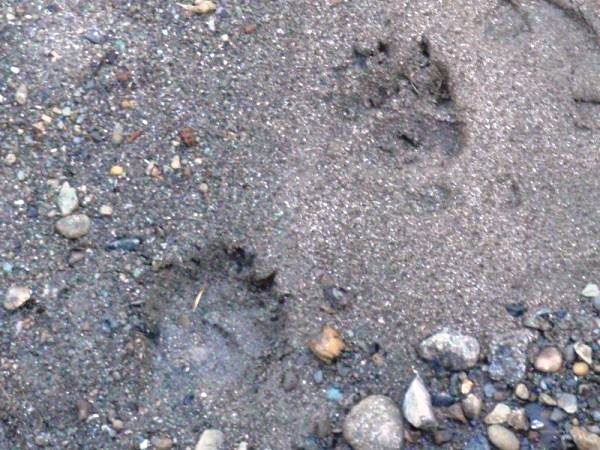
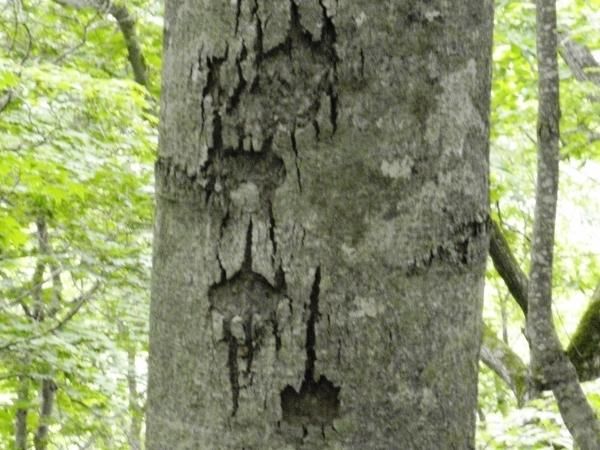
Mustelid (イタチ)Mustelidae Fischer 1817 (イタチ)Subfam Guloninae (クズリ)Subfam Helictidinae (イタチアナグマ) Subfam Ictonychinae (ゾリラ) Subfam Lutrinae (カワウソ) Enhydra (ラッコ): E. lutris L. 1758 (ラッコ) Subfam Melinae (アナグマ) Subfam Mellivorinae (ラーテル) Subfam Mustelinae (イタチ) Subfam Taxidiinae (アメリカアナグマ) |
Herbivores (in particular vertebrates) feed on plants. The effects of grazing on vegetatiion are positive, negative, or neutral.
Negative effects: often observed when over-grazingg occurs. The grazing leads soil erosion, water pollution, and lowering diversity.
Positive effects: Intermediate disturbance hypothesis predicts that moderate grazing supports high biodiversity.
 1 1
|
 2 2
|
To investigate the effects of grazing on vegetation, enclosure experiments are often conducted.
[1] around Toolik Lake, Alaska, on August 8 2009. [2] in Nakajima Island (中島) enclosed by Toya Lake on July 21 2005. This enclosure is established for estimating the effects of deer grazing on vegetation. Clear differences between the inside and outside. (Tsuyuzaki & Takahashi 2007) |
|
anthropoid (類人猿): species in superfamily Hominoidea excluding Homo
≠ the taxon of biological unit  Fig. Phylogenetic tree showing the lineage of living primates. Superfam Hominoidea (ヒト): no tail Classical taxonomy: ono species in one genus, Homo Recent taxonomy: three negenra Gorilla Geoffroy 1852 (ゴリラ) G. gorilla Western gorilla
gorilla Savage 1847, Western lowland gorilla
beringei Matschie 1903, Mountain gorilla Homo ヒト: H. sapiens sapiens, man |
1. Human as vertetbrates (脊椎動物としてのヒト)a. Water (blood - fluid - water)Table. Relative abundance of elements when Na is 100%.
Human Dog Frog Cod Shark Lobster Jellyfish Seawater 2. Human as mammals (哺乳類としてのヒト)Table. Mechanical factors and corresponding body structures improving adaptation to cursorial (running) or graviporal (walking) locomotioncursorial - step rate↑ - moment of interia↓ ~ thinning and elongation of distal limb segements - torque↑
~ effective muscle mass relative↑ - step length↑ - rotation angle↑
~ limb joint flexion↑ - rotation radius↑
~ limb length↑ graviportal - antigravity↑ - torque↑
~ muscle power arm relative↑ - rotation angle↑ ~ limb joint flexion↓ - step length↑ - rotation radius↑ ~ limb length⇅ |
|
Feeding habits classfied by food types → the classification is applied for not only mammals but also all the animals Carnivore (肉食動物, s.l.) terrestrial large vertebrates and invertebrates (predation and scavenging) → carnivorous (肉食性)meat eaters, generally requiring live foods have a short intestinal tract, and a relatively large stomach designed to hold an entire fish. Their digestive system lacks the ability to digest vegetable matter, so even though they might eat plants, they cannot derive nutrients from them as other fish do. Because they will chase down and eat other fish in the aquarium, carnivores are not suitable for a community tank.
carnivore (s.s.): terrestrial vertebrates myrmecophagy: ants and/or termites
molluscivore: molluscs Herbivore (草食動物, s.l.)eating plants → herbivorous (草食性) are on the opposite end of the dietary food chain from carnivores. Although herbivores can sometimes be seen eating live foods, the proper diet for an herbivore consists of plants, algae, and fruits.They have no true stomach; instead they possess a specialized intestine that is capable of breaking down plant matter. Their teeth are flat, which allows them to grind food before swallowing it. Because they lack a stomach for holding large volumes of food, the herbivore must eat frequently - at least several times per day. Because herbivores require frequent feedings of vegetables and fruits, they are often not the best choice for a community tank. Any heterotrophic organism that feeds (consumes) exclusively on plant matter.
graminivore: grasses (s.l., i.e., including sedges, rushes, etc.) |
adjective: -rous
palynivore: pollen bacterivore: bacteria Omnivore (雑食動物)eating any food (or animals, plants, fungi, etc.) → omnivorous (雑食性)none of above (eating non-living or decaying food) eat a variety of meat and vegetable matter. Although omnivores can and will eat vegetable matter, they cannot digest some types of grains and plants. Their teeth and digestive tract possesses some of the traits of both the carnivore and the herbivore. Omnivores are the easiest of all fish to feed, as they eat flake foods as well as live foods, and everything in between. For that reason, omnivores are an excellent choice for a community tank.
scavenger: carrion Plants damaged by herbivores on Mount Koma (渡島駒ヶ岳)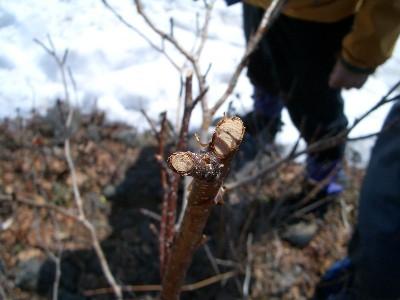
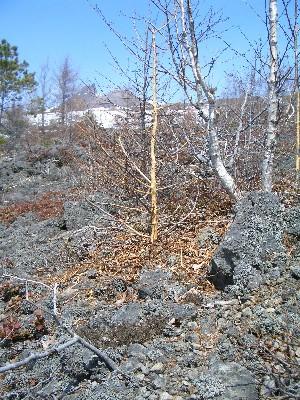
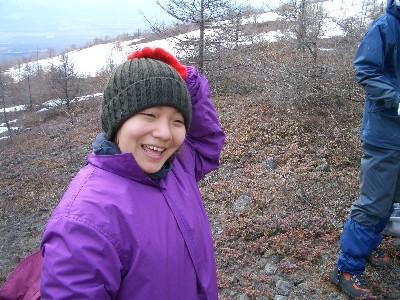
[Left] sharp feeding trace by hare. Photo taken on April 28 2005 by Miyuki Matsuda. [Center] the stem bark of Larix kaempferi (カラマツ) is completely removed by mouse or rat. On April 28 2005, by Miyuki Matsuda. [Right] the most dangerous omnivore on Mount Koma. On April 28 2005, by M. Akasaka |